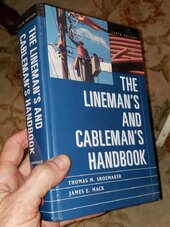Bananaman321
⚡solar idiot ⚡
I was required to get 12 Ohms. More than once I've had to drive over 50 feet into the ground and you could easily pour some water or pee on it and get that but that's cheating and if someone happened to check your work on a dry day? That's why I drove a minimum 20 feet.Whatever extra tools you need depends entirely on your soil type. I have pushed ground rods in for the first 5', and then wailed them in the last 3 feet with a sledge, and I've fought with them for an hour driving the thing at a 45 degree angle ( max allowed by code iirc). The rotary hammer attachments are great, either sds-max or spline drive, but you need a beefy rotary or demo hammer for it to do it. If you have rocky soil (NH ain't called the granite state for nothing), then expect to finish it with a sledge or a bandsaw (never do this, because code). I have a cheater for a sledge hammer so I can farmer that ground rod in. In sandy soils some people can pour water over the ground rod and push it in. You also, unless you have a ground resistance meter that can prove 1 has a resistance to ground of 25 ohms or less, have to drive 2.
I pulled old power pulls out of the ground during a utility re-conductor that just had the ground wire coiled about six times on the bottom of the pole and stapled to it. I assume that must have been the build code back 40-50 years ago.



